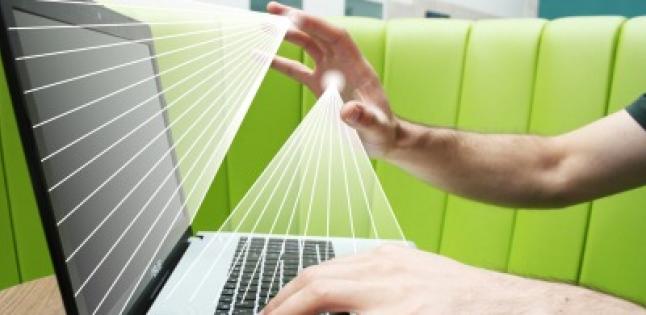Birds of a feather flock together
Likeminded people tend to stick together. This can be especially true of people who share a family connection. 15 May is the International Day of Families: an occasion to highlight the role of family in society. We take this opportunity to look at the work of some ERC funded researchers who share this connection as well as a common interest in research.

The scientists in this article all work towards the same goal: to help push the boundaries of scientific knowledge and potentially improve our lives. They also happen to be partners or siblings! Read further and discover their various but complementary scientific contributions to our society.
It’s all about chemistry
Dr Kimberly Bonger and Dr Martijn Verdoes are chemists who not only share a home address with their two daughters, but also their work address. Both are employed at Radboud University in the Netherlands. They work on ways to better understand autoimmune diseases and improve living conditions for cancer patients.
Rheumatoid arthritis, an autoimmune disease causing cartilage destruction and bone erosion, affects more than 350 million people worldwide. The origin of the condition is unclear, but recent evidence suggests that the dysregulation of the Peptidyl Arginine Deiminase (PAD) - a type of protein – could be associated with the onset of the disease.
Dr Bonger is developing innovative chemical biology and molecular tools to study the part played by this protein in the disease. With her recent ERC grant, she intends to use chemical strategies to reveal the secrets of protein citrullination – the conversion of the protein’s amino acid arginine into the amino acid citrulline – in order to find the link with autoimmune diseases. The results of her project could help answer fundamental questions on citrullination and PAD biology and improve patients’ wellbeing.
Recent breakthroughs in blocking immune checkpoints – a mechanism that reactivates the immune system to attack tumour cells - brought tumour immunology research back into the spotlight. This clinical success unfortunately comes at the cost of severe immune-related side effects.
Dr Verdoes’ ERC funded research proposes to set up a chemical immunology platform to design and synthesise innovative tools to study tumour immunology and to fight cancer with enhanced precision. With his team, he will develop a synergistic chemistry-based therapeutic toolbox to attack cancer from multiple immunological angles. The immune system will be trained to recognize cancer with novel multi-functional vaccines and simultaneously immunosuppressive barriers will be eliminated locally in the tumour microenvironment, in the hopes of increasing cancer immunotherapy success without systemic side effects to improve patients’ quality of life.
And communication
In a world dominated by Information Technology and communication, algorithms are king. The Bronstein brothers Alexander and Michael, respectively based at Technion – Israel Institute of Technology and Università Della Svizzera Italiana, both study aspects of computer science.
The principle that “simpler solutions are more likely to be correct than complex ones” has been a tremendously successful model in numerous domains of science, including image processing. However, there are limitations in this model regarding the way algorithms guess sequences to generate results. Alexander Bronstein proposed to develop a new approach by putting sparsely represented data – data with gaps in their recording - at the centre of an algorithm, to bring to light crucial aspects lost in the optimisation processes.
The results of his project led to the development of a new type of measurement hardware that when applied to Electroencephalography (EEG) – a method to record electrical activity of the brain used to diagnose epilepsy, sleep disorder or comas - increased the accurate rendition of the activities in the brain’s cortex.

Michael Bronstein chose to work on a completely different sector: machine learning. His project aimed at generalising concepts of deep learning - artificial intelligence systems inspired by some capabilities of the human brain to learn patterns - to apply to geometric and graph-structured data such as social networks.
Geometric data are becoming increasingly important in a variety of fields including computer graphics and vision, sensor networks, biomedicine, genomics, and computational social sciences. Because the existing methodologies for dealing with geometric data are limited, Michael Bronstein proposed a novel way of achieving better results, qualitatively and quantitatively. His project developed geometric deep learning methods into software capable of adapting on demand.
The results of his research led to a new class of geometric deep learning algorithms that can be used to detect fake news in social media.
Using all our senses
Human-computer interactions (HCI) is a multidisciplinary field of study that looks into how humans use sophisticated technologies and how technology can be improved to facilitate its use. Our final couple, Professors Marianna Obrist and Sriram Subramanian, work at the University of Sussex. They explore new ways for humans to interact with technology, using multiple senses. Marianna Obrist wants to revolutionise multisensory experience research and design within the HCI community by integrating the understanding of touch, taste and smell experiences into interactive technologies. In 2016, she proposed the idea of Olfactory Widgets (OWidgets), a novel non-existing semantic layer for smell to enable olfactory experience design. Smell can convey specific information to the user to augment and/or change the way we humans interact with technology.

Prof Sriram Subramanian designs new and novel user-experiences through a combination of physical science, engineering, and creativity. His objective is to harness the rich sensory possibilities of touch to improve our relationship with everyday technology. He designed a haptic feedback system – based on the ability to feel and manipulate objects through our sense of touch – that would allow us to control our devices without touching them.
If research gives wings to humanity, birds of a feather undoubtedly flock together.

